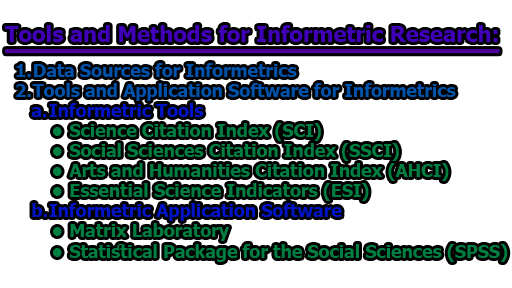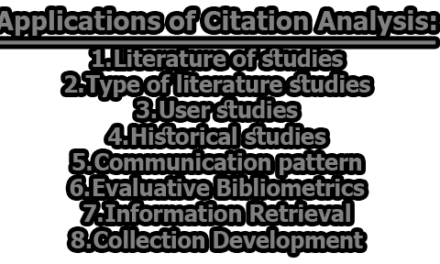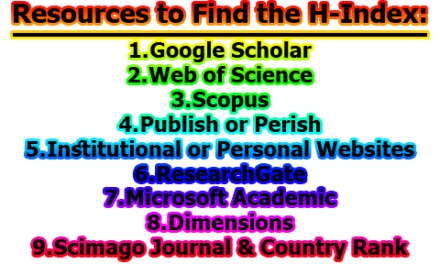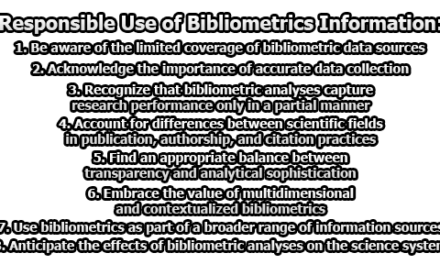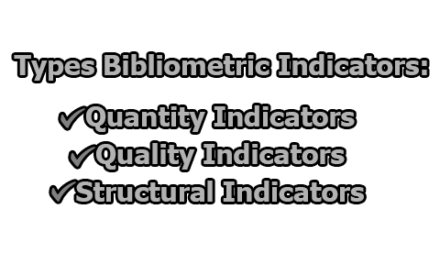Informetrics is a field of study that focuses on the quantitative analysis of information and its production, dissemination, and use. It is concerned with measuring and analyzing various aspects of information, such as its creation, distribution, retrieval, and impact. Informetrics is an interdisciplinary field that draws on methods and techniques from various disciplines, including library and information science, computer science, statistics, and mathematics. It is often used in the evaluation of research productivity, citation analysis, and the study of scholarly communication. The term informetrics was coined in the 1980s by the Dutch information scientist, Pieter T. H. Ingwersen, to describe the application of quantitative methods in information science. Since then, informetrics has become an established field of study, and its methods and techniques are widely used in many areas of information science and related disciplines. In this article, we will explore the tools and methods for informetric research.
Definitions of Informetrics:
Here are a few different definitions of informetrics:
“Informetrics is the application of quantitative methods and techniques to the study of information, its production, dissemination, and use.” (Burrell, 2018)
“Informetrics is a subfield of information science that studies the quantitative aspects of information and its production, dissemination, and use.” (Leydesdorff, 2003)
“Informetrics is the study of quantitative aspects of information, including its production, dissemination, and use, especially in the context of scholarly communication and scientific research.” (Glänzel and Moed, 2002)
“Informetrics is the field of information science that uses mathematical and statistical methods to analyze and measure the production, dissemination, and use of information.” (Cronin and Sugimoto, 2014)
From the above definitions, we can say that informetrics is a field that focuses on using quantitative methods to study information and its various aspects, including creation, dissemination, retrieval, and impact. It is an interdisciplinary field that draws on methods from fields such as computer science, statistics, and mathematics, and is often used to evaluate research productivity, citation analysis, and scholarly communication.
Tools and Methods for Informetric Research:
Informetric research involves the use of various tools and methods to collect, analyze, and interpret data related to scientific and technological research. Some of the key tools and methods used in informetric research are:
1. Data Sources for Informetrics: Data sources of informetrics vary with time. The traditional “10 great information sources” and new ones, such as disc data and network data, are presented here:
a. Science and Technology Books: These are books that cover topics in the fields of science and technology. They can be used as a source of data for informetric research, particularly for analyzing trends and patterns in scientific and technological development.
b. Technology Periodicals: Technology periodicals are publications that cover topics related to technology and engineering. They can provide a valuable source of data for informetric research, particularly for tracking the development of new technologies and innovations.
c. Technology Reports: Technology reports are documents that provide detailed information about specific technologies or engineering projects. They can be used as a source of data for informetric research, particularly for analyzing the impact of specific technologies on industry and society.
d. Conference Literature: Conference literature includes papers, posters, and other materials presented at conferences and meetings. It can provide a valuable source of data for informetric research, particularly for analyzing trends and patterns in scientific and technological research.
e. Patent Documents: Patent documents provide detailed information about new inventions and technological innovations. They can be used as a source of data for informetric research, particularly for analyzing trends in patenting activity and the development of new technologies.
f. Standard Literature: Standard literature includes technical standards, regulations, and guidelines that govern the development and use of specific technologies. It can be used as a source of data for informetric research, particularly for analyzing the impact of standards on industry and society.
g. Degree Theses: Degree theses are academic papers written by students as part of their graduate studies. They can provide a valuable source of data for informetric research, particularly for analyzing trends and patterns in scientific and technological research.
h. Product Information: Product information includes marketing materials, technical specifications, and other information about specific products and technologies. It can be used as a source of data for informetric research, particularly for analyzing the development and adoption of new technologies.
i. Technical Files: Technical files include documents related to the development, testing, and certification of specific technologies. They can provide a valuable source of data for informetric research, particularly for analyzing the impact of regulatory and certification processes on industry and society.
j. Science and Technology Newspapers: Science and technology newspapers are publications that cover topics related to science and technology. They can provide a valuable source of data for informetric research, particularly for analyzing trends and patterns in scientific and technological research.
k. CD Data: CD data include electronic databases and other digital sources of information. It can be used as a source of data for informetric research, particularly for analyzing trends and patterns in scientific and technological research.
l. Network Data: Network data includes social networks, bibliographic networks, and other types of networks that can be used to analyze the relationships between different entities. It can provide a valuable source of data for informetric research, particularly for analyzing the impact of collaboration and communication on scientific and technological research.
2. Tools and Application Software for Informetrics: Informetrics is a research field that focuses on the analysis of scientific and technological information. It involves the use of various tools and techniques to gather, analyze, and visualize data related to scientific and technological research. In this regard, there are several informetric tools and application software that are commonly used in informetric research.
a. Informetric Tools:
- Science Citation Index (SCI): The SCI is a database of scientific journal articles that tracks citation data for over 9,000 journals in the natural sciences, social sciences, and humanities. It allows researchers to identify the most cited articles, authors, and journals in a particular field, and to track citation trends over time.
- Social Sciences Citation Index (SSCI): The SSCI is a database that tracks citation data for over 3,000 social science journals. It allows researchers to identify the most cited articles, authors, and journals in the social sciences, and to track citation trends over time.
- Arts and Humanities Citation Index (AHCI): The AHCI is a database that tracks citation data for over 1,700 arts and humanities journals. It allows researchers to identify the most cited articles, authors, and journals in the arts and humanities, and to track citation trends over time.
- Essential Science Indicators (ESI): ESI is a database that provides data and insights into emerging research trends and the impact of scientific research across disciplines, institutions, countries, and regions.
- Engineering Index (EI): The EI is a comprehensive database that covers over 12 million engineering-related publications and includes conference proceedings, technical reports, and journal articles. It allows researchers to track trends in engineering research and to identify the most cited articles, authors, and journals in the field.
- Index to Scientific and Technical Proceedings (ISTP): The ISTP is a database that provides citation data for conference proceedings in science and technology. It allows researchers to track trends in conference research and to identify the most cited articles, authors, and conferences in a particular field.
- Chinese Science Citation Database (CCSI): The CCSI is a database that provides citation data for scientific publications in China. It allows researchers to track trends in Chinese scientific research and to identify the most cited articles, authors, and journals in the field.
- Chinese Social Science Citation Index (CSSCI): The CSSCI is a database that provides citation data for social science publications in China. It allows researchers to track trends in Chinese social science research and to identify the most cited articles, authors, and journals in the field.
b. Informetric Application Software:
- Matrix Laboratory: Matrix Laboratory (MATLAB) is a powerful programming language and environment that is widely used in informetric research. It provides a range of tools for data analysis, modeling, and visualization, and is particularly useful for analyzing large datasets.
- Statistical Package for the Social Sciences (SPSS): SPSS is a software package that provides tools for statistical analysis, data management, and visualization. It is widely used in informetric research, particularly in the social sciences, and allows researchers to analyze large datasets and generate meaningful insights.
In conclusion, the use of informetric tools and application software has become increasingly important in scientific and technological research. These tools and software provide researchers with valuable insights into research trends and patterns and help them to identify the most influential articles, authors, and journals in their field. They also provide researchers with the means to analyze and visualize large datasets, making it easier to identify meaningful insights and communicate their findings to others.

Assistant Teacher at Zinzira Pir Mohammad Pilot School and College

